| Day 1 Lhasa ( ) |
Pick-up from airport or train station, and escort you to hotel for check-in. Free time on the rest of today for you to rest and acclimatize.
Travel Tips:
1. Take anti-AMS medicines ahead of a week before your trip.
2. Please avoid strenuous activity for the first few days. For first time visitors, it’s common to get different degrees of high altitude sickness. Drink more waters, have fresh fruit and plenty of rest will help to prevent the sickness.
3. A first aid kit including aspirin, antibiotics and AMS medication is highly recommended.
4. Photographic Gears:
①. Section of Lens: It’s better off choosing zoom lens. The 17-35mm/70-200mm lens is able to meet different photography needs. 50mm standard lens with large caliber can be used to shot portraits or low light scenes, converters to the wild animals, remote snow-capped mountains and glaciers.
②. Please take a backup camera in case of the blackout in some places, due to the poor infrastructures in Tibet.
5. Best time to go: May - June, September - October
|
|
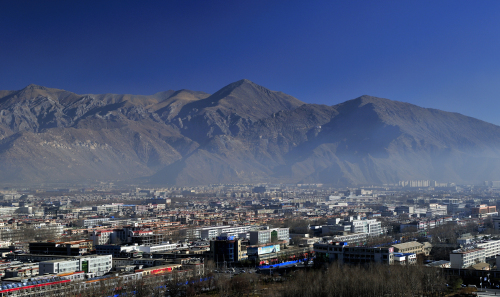 |
| [ Optional ] Ramoche Monastery: it is one of the key cultural relic protection sites in Lhasa, located on the north of Barkhor Street, in the area with a local market and many traditional style Tibetan style civilian houses. |
|
| Day 2 Lhasa ( ) |
Have a close-up view of the immense religious structure and masterpiece of Tibetan architecture – Potala Palace. Then move to the Jokhang Temple, an ancient temple dating from the 7th century. You can see many pilgrims worship within or nearby the temple. Also take a relaxing walk walking at Barkhor Street, a place crammed pilgrims joining in religious activities and street venders selling various Tibetan goods and religious items.
Shooting Tips:
1. In summer, the best time to photograph Potala Palace is 4:00pm-5:00pm, while in other seasons, morning and night. Shooting from the viewing platform in the white pagoda of the palace, you can get a panoramic images. Potala Palace in the early morning is quite mystery with the heavy aromatic perfumes rising on all sides in spirals of smoke from censers. Additional fee is charged for grabbing photos inside the Potala Palace, where many exquisite chapels and a golden roof stand.
2. Jokhang Temple is the great place to shoot pilgrims worshipping and real Tibetan people. Walk up to the second floor and take images of the golden roof and enjoy the beautiful sunshine of Lhasa. Late afternoon is the best time to photograph.
3. Barkhor Street is the ideal place to take photos of Tibetan people’s “real life”.
|
|
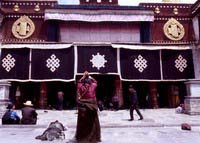 |
| [ Optional ] Tibetan Opera Performance: The Tibetan people are good at singing and dancing. Tibetan opera is called "Ajilamu" in Tibetan which means "sister fairy maiden". It is a kind of public square opera, which has play, vocal music, separate roles, accompanying band and special masks and clothes, and its main form is song and dance. |
|
| Day 3 Lhasa, Shigatse ( ) |
After breakfast, drive about 2 hours (120 kms) to Yamdrok Tso Lake, the highest freshwater lake in the world. On the way, you can visit Karola Glacier. Afterwards, drive to Palkhor Monastery, taking near 2 hours (140 kms). And you can see the Zongshan Castle in distance. Later of the day, you’ll be driven to Shigatse (1.5 hours, 150kms) and escorted to hotel for check-in.
Shooting Tips:
1. Gangbala Yamaguchi (5200 meters above sea level) offers you a panoramic view of the Yamdrok Tso Lake. Wide-angel lens and standard lens are both available for overall views. Long-focus lens can shoot a part of the lake. Kindly note that there’s much wind at the mountain pass, you should erect the tripod stable. The lake road away from Langzika County can help you get close-up photos of the lake.
2. Summer is the best time to shoot Yamdrok Tso Lake. Green grassland, flowers in bossom, along with turquoise blue water display beautiful landscapes.
3. Annual July is the best time to shoot Gyantse. From Karola Glacier to Smila Mountain, harmonious natural scenery in valleys comprised of barley, rapeseed and villages, is along all the way.
4. Nestled at mountains, the red wall of Palkhor Monastery winds ups and downs, seeming to be a curve, creating beautiful patterns of light and shade in the low angle of the sun. Why not snap charming photos in front of the temple? Or explore traditional Tibetan culture in an old street lying on the north side of the temple entrance 50 meters.
5. Zongshan Castle features its steepness and majesty. The best position to photograph is on the highway road from Gyantse to Lhasa. Such as in late summer, the photographic images will be very spectacular, with golden yellow fields of barley as foreground. |
|
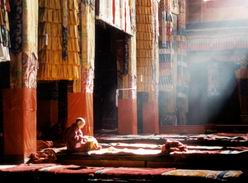 |
| [ Optional ] Norbulingka: The Norbulingka Park: Norbulingka means "Jeweled Garden". It was constructed as a summer palace for the Dalai Lama at the very beginning and later served as the whole governmental administration. |
|
| Day 4 Gyantse, Rongbuk Kloster ( ) |
After breakfast, embark on driving to Rongbuk Kloster, nearly takes you 8 hours (350kms). Time permitting, you can try to make your way to the stunning sunset over Mt. Everest. En-route to Rongbuk Kloster, you’ll come across 4 high mountains capped with snow: Mt. Everest (8848meters), Makalu(8463meters),Lhotse(8516meters), Cho oyu peak(8201meters).
Shooting Tips:
1. Rongbuk Kloster is the best place to photography Mt. Everest. As you take photos, you can choose its Kumbum Stupa as foreground, or the river, 3 kilometers from the Everest Base Camp. This camp is 8 kilometers from Rongbu Monastery, only suitable to enjoy the beauty of Mt. Everest.
2. Due to the low temperature around Rongbuk Kloster, 510 meters above sea level, enough clothes to keep warm are highly recommended. Thick sweater and jacket are needed even in summer, down jacket in spring and fall, as well as gloves and hats with ear-covers.
|
|
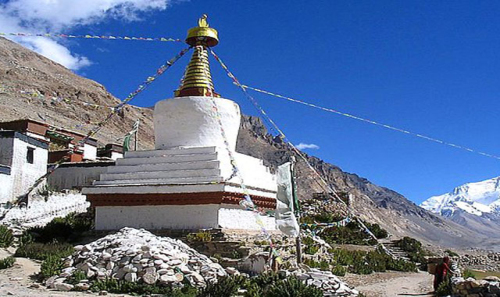 |
| [ Optional ] Yamdroktso Lake: Yamdroktso Lake (4408 m), where you will enjoy the vista of its pincer-shaped expanse of turquoise water, with the mysterious Mt. Donang Sangwari (5,340m) on the peninsula beyond, and the snow peaks of Nojin Gangzang (7,191m) in the distance. You can walk around the lake before continuing our drive across the narrow Karo-La pass and descending to Gyantse. |
|
| Day 5 Shigatse ( ) |
This morning, take in the stunning sunrise of Mt. Everest at Rongbuk Kloster. Take some unique photos! Later of the day, you’ll be driven back to Shigatse and transferred to hotel.
Shooting Tips:
1. 6:50am in summer, along with 7:20am in spring and fall, is the best time to photograph the sunrise over Mt. Everest.
2. A firm tripod is necessary as there is much wind around Rongbuk Kloster. |
|
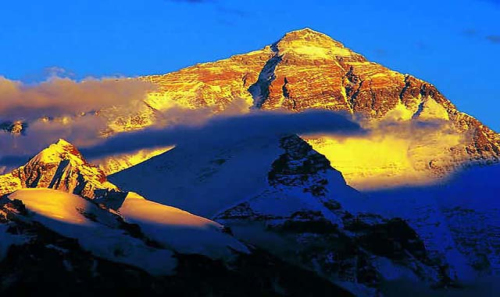 |
| [ Optional ] Sakya Monastery: Sakya Monastery is reputed as as the "Second Dunhuang", it is the first Sakyapa monastery of Tibetan Buddhism founded by its initiator Khon Konchog Gyalpo in 1073, from where Sakyapa rose and once ruled Tibet. Standing there now is the old Southern Monastery, an imposing Mongol-style structure. |
|